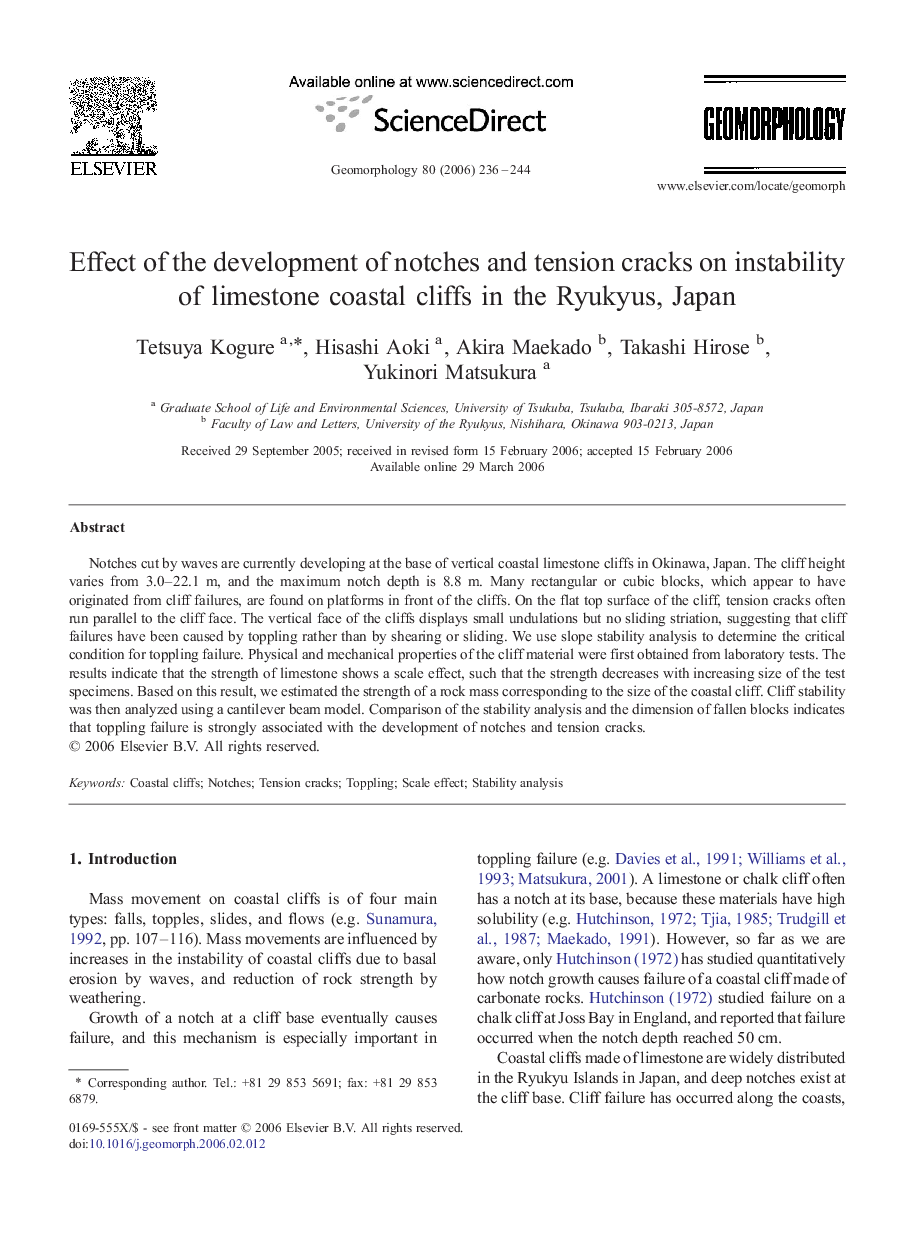| Article ID | Journal | Published Year | Pages | File Type |
|---|---|---|---|---|
| 4687415 | Geomorphology | 2006 | 9 Pages |
Notches cut by waves are currently developing at the base of vertical coastal limestone cliffs in Okinawa, Japan. The cliff height varies from 3.0–22.1 m, and the maximum notch depth is 8.8 m. Many rectangular or cubic blocks, which appear to have originated from cliff failures, are found on platforms in front of the cliffs. On the flat top surface of the cliff, tension cracks often run parallel to the cliff face. The vertical face of the cliffs displays small undulations but no sliding striation, suggesting that cliff failures have been caused by toppling rather than by shearing or sliding. We use slope stability analysis to determine the critical condition for toppling failure. Physical and mechanical properties of the cliff material were first obtained from laboratory tests. The results indicate that the strength of limestone shows a scale effect, such that the strength decreases with increasing size of the test specimens. Based on this result, we estimated the strength of a rock mass corresponding to the size of the coastal cliff. Cliff stability was then analyzed using a cantilever beam model. Comparison of the stability analysis and the dimension of fallen blocks indicates that toppling failure is strongly associated with the development of notches and tension cracks.
